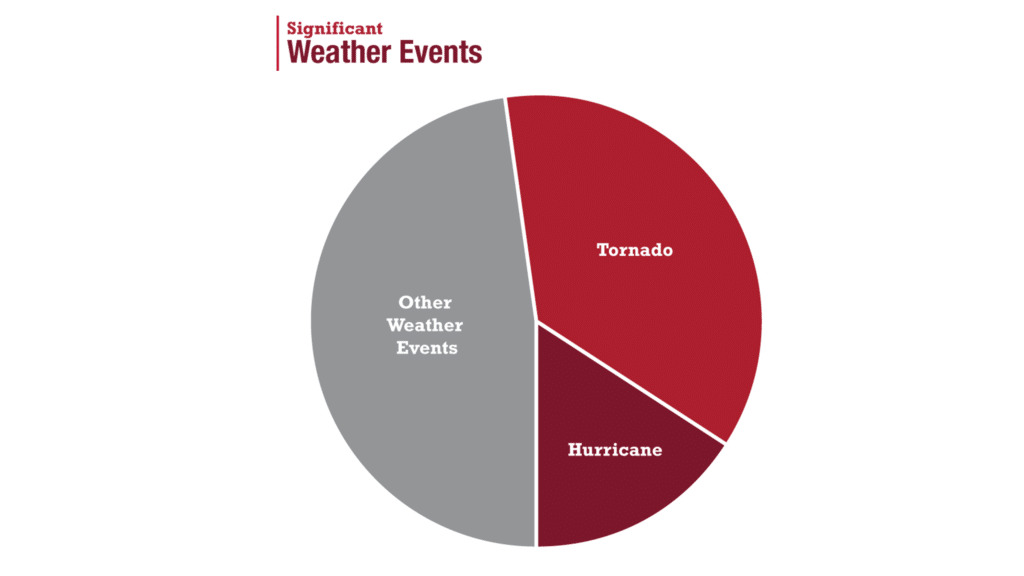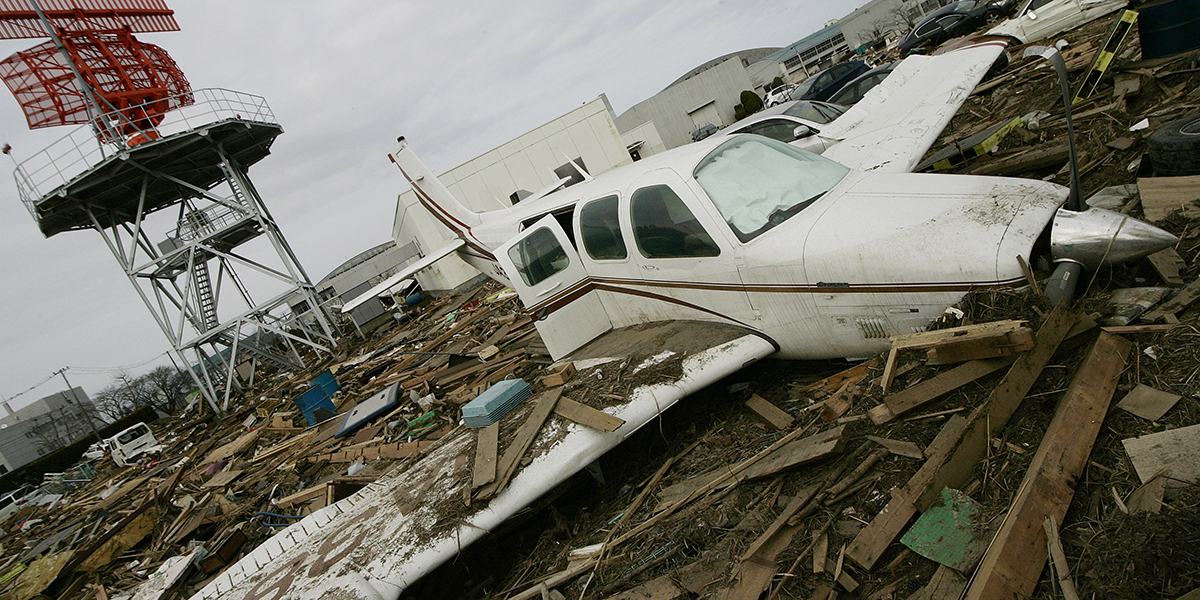Morris Plains, NJ, Aug. 15, 2023 (GLOBE NEWSWIRE) -- One quick online search will tell you why insurance companies are withdrawing from providing coverage in disaster-prone areas around the U.S.—it’s extremely expensive to address losses.
Hurricane damage alone has cost the insurance market billions of dollars in recent years, and there’s no indication that things will improve soon. In fact, the frequency and severity of storms and the resulting financial consequences are increasing every year.
Fortunately, you can take steps to lower the risk to your aircraft.
Getting Out of Harm’s Way
The most effective method of avoiding storm damage to light aircraft is, of course, not exposing them to storms. Many aviation insurance policies have provisions for reimbursement for costs associated with moving your plane out of harm’s way.
If the National Weather Service issues a Hurricane Watch or Hurricane Warning for your home airport, you can be reimbursed for reasonable expenses related to moving the aircraft, including pilot services. Typically, you must move it at least 75 nautical miles and out of the affected area.
It’s important to note the specifics of this type of provision, such as time to report, dollar amounts and coverage type. If you are unclear about any aspect of the coverage, your broker can go over the policy with you and answer your questions.
Making Your Go/No-Go Decision With Time to Spare
Waiting until the last minute to decide whether to move your aircraft is risky. For one thing, you may miscalculate and suffer damage to your aircraft and injuries to yourself or others if the storm “catches” you.
Then, there’s the mental and emotional discomfort to consider. Ask any pilot who has had to “bug out” from their home airport, and they’ll tell you: It’s stressful. And at the core of that stress is uncertainty. If a storm is approaching, you should set a deadline for yourself to decide about retreating, leaving you with plenty of time to make your exit.
Then, make your go/no-go decision and abide by it.
Be aware that insurance companies often are willing to work with policyholders on the cost of hiring pilots to move their aircraft. Depending on the pilot’s qualifications, there may be deductibles or removal of passenger coverage, so be sure to talk with your broker. Also, ask the pilot if they have non-owned coverage. If they don’t, they can secure it online in as little as 10 minutes.
Craft a Severe Weather Plan in Advance
Needless to say, the time to plan your response to a hurricane or severe weather, in general, is before a storm is brewing. Once a Hurricane Watch or Warning has been issued, time seems to accelerate for everyone involved—aircraft owners, airport operators, insurance companies and brokers, etc. It’s much easier to develop a plan in the calm well before the storm!
Here are five steps to consider for inclusion in your plan:
- Review your insurance policy regularly. Understanding your coverage benefits you in many ways, including not having to educate yourself about your policy’s provisions as a hurricane moves in your direction.
- Research and document your options for protecting your aircraft. Are there facilities at your airport that are likely to withstand the predicted winds? What’s your first choice of location if you decide to move your plane? Your second, third and so on, in case many owners are headed for the same area? What’s involved in securing space at your preferred airports?
- Designate someone to lead storm response efforts. Maybe that’s you. Or it could be someone who works for you. But you must have a “point person” who can implement your hurricane response plan.
- Assess your environment. If you aren’t leaving your home airport, take steps to identify conditions that increase the risk of damage. For example, tools and other objects left out in a storm can become projectiles that cause significant damage.
- Remember what matters. The physical safety of you and your team must be your top priority during a hurricane. No one should ever risk harm to protect aircraft or other property. It’s simply not worth it.
Hurricane Stats
As this graphic shows, hurricanes are just one cause of weather-related hull losses. However, that fact shouldn’t promote complacency.

Pie charts don’t mean anything when watching hurricane-force winds toss your aircraft around like a kite. Instead, this graphic should drive home that preparing for severe weather (of all kinds) is crucial!
Managing Risk: The Underwriter’s Perspective
Underwriters address hurricane risks in several ways. For example, they maintain a manageable number of aircraft in disaster-prone areas. In certain instances, they may offer pricing incentives to attract a proper balance of hangared and unhangared aircraft. They also assess hangars for their ability to withstand wind and fire perils.
In many cases, underwriters incentivize aircraft evacuation for hurricane perils and price for enhanced risk based on location. In hurricane-exposed areas, underwriters apply deductibles for spares coverage, and in every case, underwriters make certain that insured values are accurate and reasonable.
Take Action Now
The next major hurricane may not strike for weeks, months, or longer. However, it could also start spinning up tomorrow. That’s why you should act today to mitigate your hurricane damage risk. That way, you can operate your aircraft confidently, knowing that if a storm develops, you have the insurance coverage and the response plan you need to prevent or minimize your losses.
About Global Aerospace
Global Aerospace is a leading provider of aircraft insurance and risk management solutions for the aviation and aerospace industries. Our over 95 years of aviation insurance experience enable us to develop customized insurance programs structured around the needs of our clients. Recognized for our industry leading customer service, we serve as a trusted partner to a diverse range of aviation businesses and their insurance producers. https://www.global-aero.com/
Global Aerospace Media Contact
Suzanne Keneally
Vice President, Group Head of Communications
+1 973-490-8588

